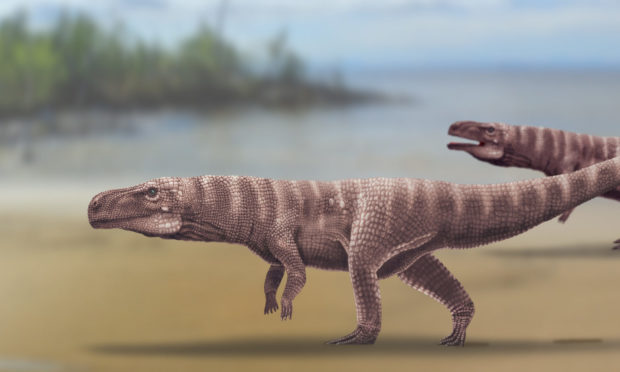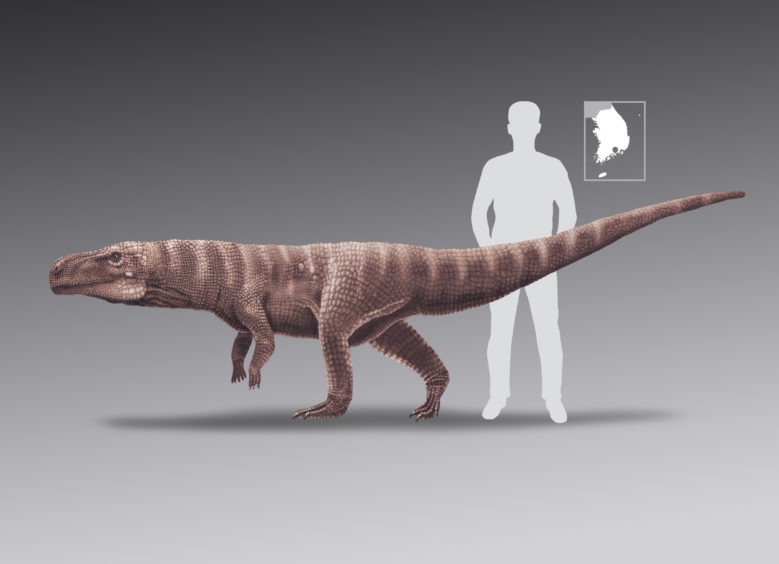
An ancient crocodile species that lived around 120 million years ago may have walked on two hind legs – just like dinosaurs, scientists believe.
Their work is based on an analysis of large, well-preserved footprints discovered at the Sacheon Jahye-ri excavation site in South Korea.
The researchers first thought the fossilised foot impressions were from another ancient reptile known as the pterosaur.
But investigations revealed the footprints to have heel-to-toe impressions, which the palaeontologists believe were unlikely to have been made by the flying reptiles.
Dr Anthony Romilio, from the University of Queensland in Australia and one of the study authors, said: “At one site, the footprints were initially thought to be made by a giant bipedal pterosaur walking on the mudflat, we now understand that these were bipedal crocodile prints.”
The team also initially questioned the absence of handprints from the trackways, given that modern crocodiles are four-legged, or quadrupedal, creatures.
But the fine details of the toe-pads and scales on the creatures’ soles preserved at the site are thought to prove otherwise.
Dr Romilio said: “The footprints measure around 24 centimetres, suggesting the track-makers had legs about the same height as human adult legs.
“These were long animals that we estimate were over three metres in length.”

Professor Kyung Soo Kim, from Chinju National University of Education in South Korea, who led the research, said that while the footprints indicate the animals were moving in the same way as many two-legged dinosaurs, the impressions at the Sacheon Jahye-ri site show clear heel impressions like those made by crocodiles.
He said: “Dinosaurs and their bird descendants walk on their toes.
“Crocodiles walk on the flat of their feet leaving clear heel impressions, like humans do.”
Dated between 110-120 million years old, the footprints are thought to belong to a new species of crocodylomorph, which are ancestors to modern-day crocodiles and alligators.
However, the trackways showed the animals to have a narrower stance than crocodiles.
Prof Kim said: “Typical crocodiles walk in a squat stance and create trackways that are wide.
“Oddly, our trackways are very narrow looking – more like a crocodile balancing on a tight-rope.
“When combined with the lack of any tail-drag marks, it became clear that these creatures were moving bipedally.”
The findings are published in the journal Scientific Reports.

Enjoy the convenience of having The Sunday Post delivered as a digital ePaper straight to your smartphone, tablet or computer.
Subscribe for only £5.49 a month and enjoy all the benefits of the printed paper as a digital replica.
Subscribe